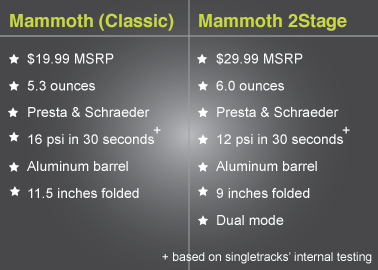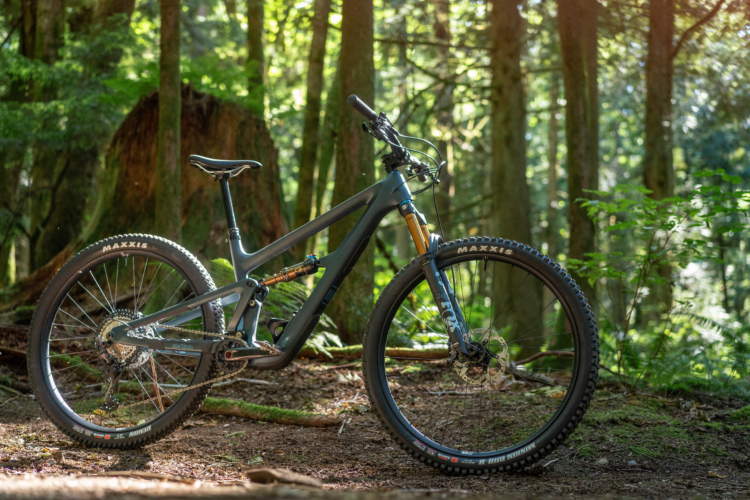
Blackburn introduced a new version of the venerable Mammoth mini-pump this year called the 2Stage that is specially designed for high volume tires found on today’s 29ers and downhill mountain bikes. We decided to see how the 2Stage stacks up to the classic in a good old fashioned pump off. The results just might surprise you…
Pump action and subjective quality
Both pumps showed superior pump action and we were impressed by how smoothly each pump handled. The Mammoth 2Stage feels slightly more solid in your hand and this is probably due to its more compact shape and heavier weight (more on that later). Clearly the Mammoth classic and 2Stage have been engineered to hold up on the bike trail and we’re impressed with the engineering that went into these pumps. Both pumps include a locking mechanism to clamp onto your Presta or Schraeder valve snugly and securely.
Pumping speed
For this comparison we decided to stage a little test to see how much pressure each pump could produce in a 26×2.10 tire in 30 seconds. The Mammoth classic was first and after 3 trials we averaged about 16psi in 30 seconds of pumping. In order to test the Mammoth 2Stage we tried pumping on the low pressure, high volume setting for 15 seconds, then switched to the high pressure, low volume setting for the remaining 15 seconds and only averaged about 12 psi in our test. We even retested using the high volume setting until the pumping became too difficult (about 10 seconds), switching to high pressure for the last 20 seconds with about the same pressure result. Finally, we tried using the high pressure setting from the beginning and actually found a slight advantage (around 14psi) but not enough to conclude this was the best way to use the 2Stage. As a point of comparison to both mini pumps, our floor pump juiced the tire to 36psi in 30 seconds.
The Mammoth 2Stage officially tops out at a max pressure of 120psi which is higher than the classic’s advertised max (90psi). This is kinda ironic since fat tires are usually run at lower pressure than skinny ones. In fact, at 120psi you’re officially into the track bike tire pressure range – not even road riders dare go that high!
Grip

The Mammoth 2Stage mini bike pump does away with the folding t-handle found on the classic model (top) and we really think this is a major oversight. The t-handle gave a much better grip and allowed us to pump faster with more force than we could generate with the 2Stage. In fact we suspect the handle grip may have given the classic the edge in winning the 30-second pressure test. Of course the folding handle does come with a price – size – which our next criteria considered.
Size and weight

The Mammoth 2Stage and Mammoth classic pumps are fairly similar in size and weight. The 2Stage comes with a fatter, heavier barrel but is more compact than the classic. As you can see from the comparison chart, the 2Stage weighs just 0.7 ounces more than the classic but is 2.5 inches shorter – definitely something to consider if your Camelbak is already bursting at the seams!
Admittedly our tests didn’t necessarily play to the strengths of the 2Stage – for that we needed a much fatter tire with a larger diameter (do they make 29er Pugsleys?). However, based on our tests we’d say most riders can skip the 2Stage and stick with the Mammoth classic for a solid, trail worthy mini-pump.







2 Comments
Feb 1, 2009
Dec 17, 2008